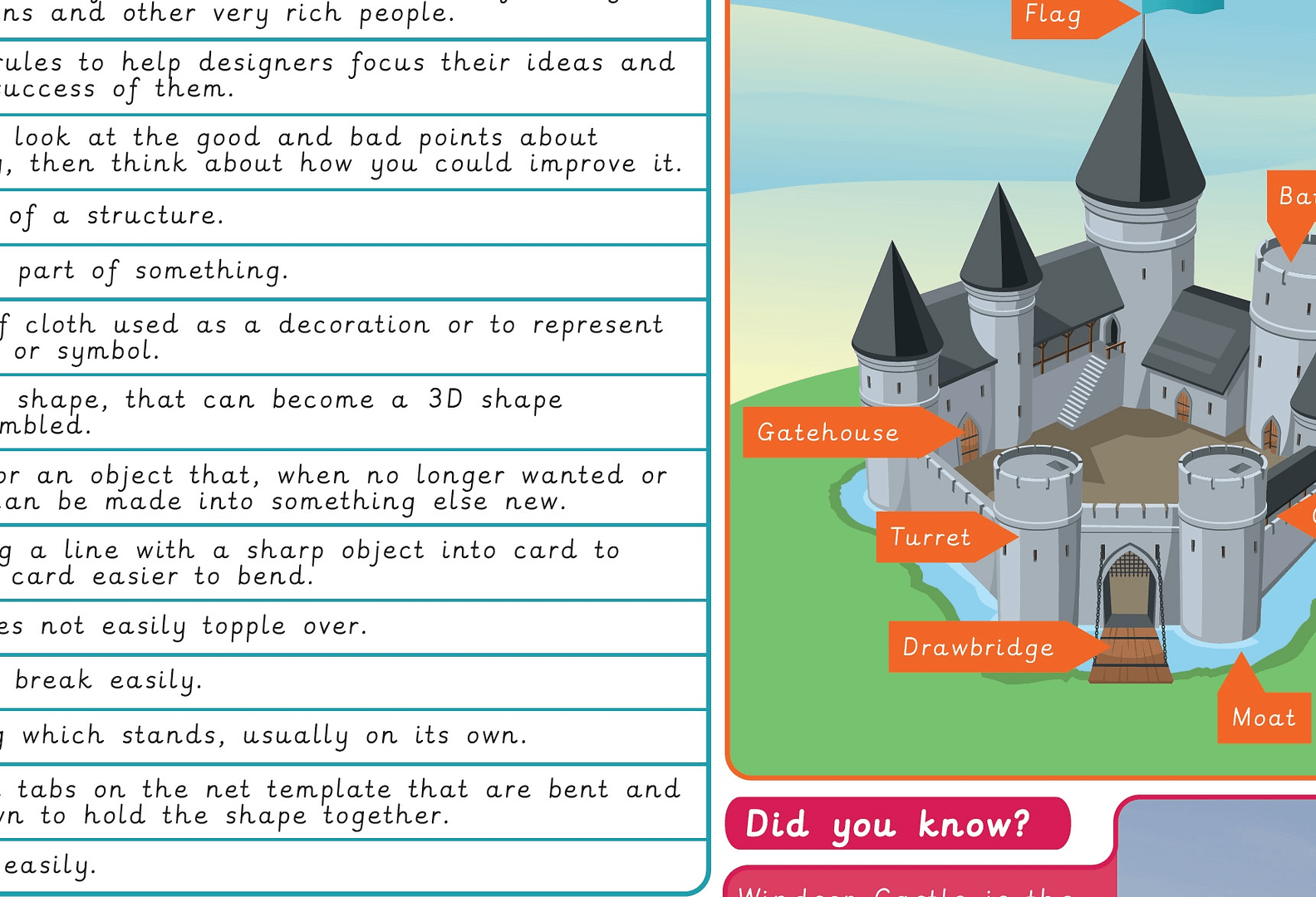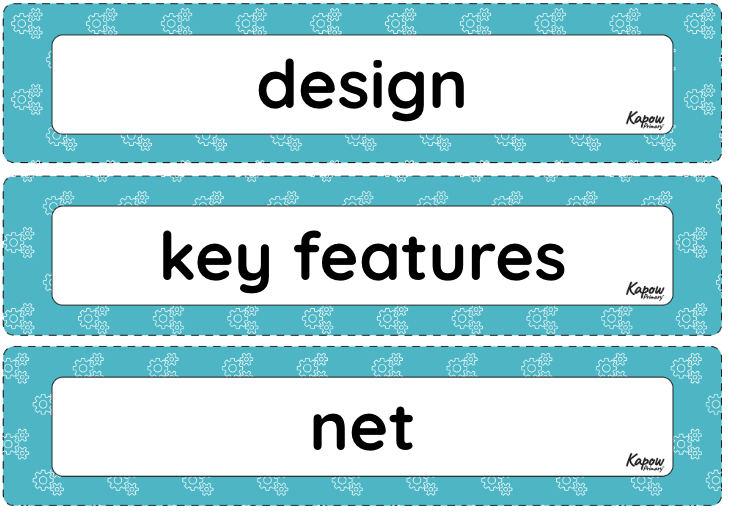Structures: Constructing a castle
This unit hub can be used to inform your medium-term plan and to navigate to related resources.
The Curriculum and Assessment Review final report has been released. We’re reviewing the recommendations and planning for future updates. Learn more
- Subjects >
- Design and technology >
- Key stage 2 >
- Year 3 >
- Structures >
-
Structures: Constructing a castle
Please note
This unit has been replaced by the unit *New* Structures: 3D shapes. It will move to our Content archive in November 2026. It will remain permanently available but will not be updated in line with curriculum or website developments.
Unit outcomes
Pupils who are secure will be able to:
- Draw and label a simple castle that includes the most common features.
- Recognise that a castle is made up of multiple 3D shapes.
- Design a castle with key features which satisfy a given purpose.
- Score or cut along lines on the net of a 2D shape.
- Use glue to securely assemble geometric shapes.
- Utilise skills to build a complex structure from simple geometric shapes.
- Evaluate their work by answering simple questions.
Suggested prior learning
Structures: Baby Bear’s chair
Get startedLesson plans
Lesson 1: Features of a castle
- To recognise how multiple shapes (2D and 3D) are combined to form a strong and stable structure.
Lesson 2: Designing a castle
- To design a castle.
Lesson 3: Nets and structures
- To construct 3D nets.
Lesson 4: Building a castle
- To construct and evaluate my final product.
Key skills
Related content
Unit resources

Knowledge organiser – D&T Y3: Constructing a castle
Aimed at pupils, a single page which gives key facts and definitions from the unit 'Structures: Constructing a castle.'

Vocabulary display – D&T Y3: Structures: Constructing a castle
A display version of the vocabulary from the unit 'Constructing a castle'.
Cross-curricular opportunities
History
‘Pupils should be taught about:
- a study of an aspect or theme in British history that extends pupils’ chronological knowledge beyond 1066′
See National curriculum - History key stages 1 to 2.
Mathematics
‘Pupils should be taught to:
- draw 2-D shapes and make 3-D shapes using modelling materials; recognise 3-D shapes in different orientations and describe them’
See National curriculum - Mathematics key stages 1 to 2.
British values: Mutual respect.
Suggested next steps
Structure: Pavilions
Pupils build on their experience of castle design, from assembling geometric shapes to construct a secure structure, to help them design and create stable, free-standing pavilions.

